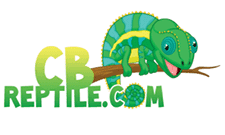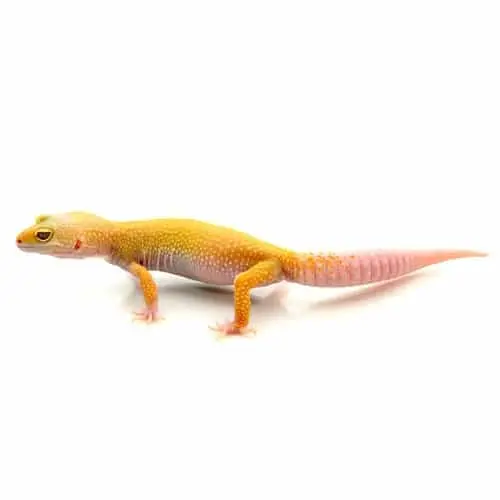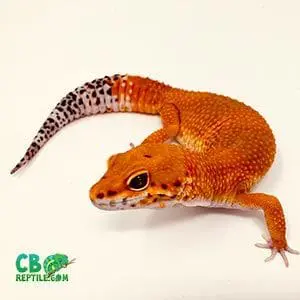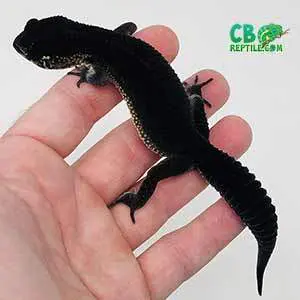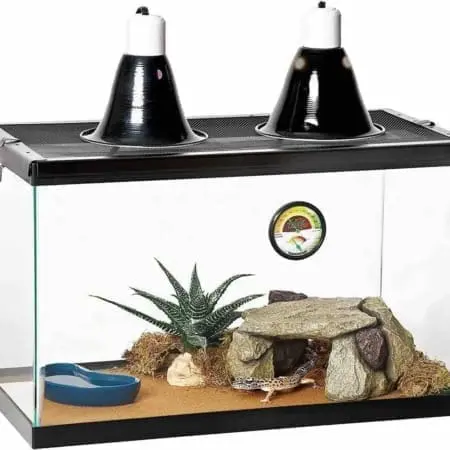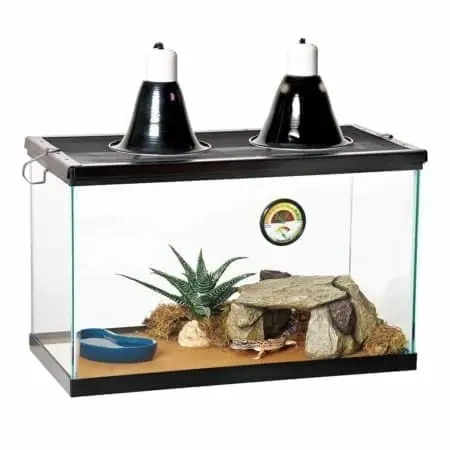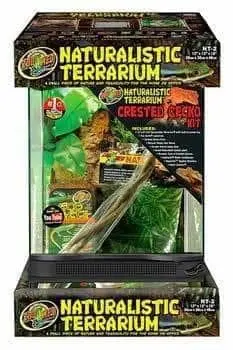Leopard gecko habitat
Adult leopard geckos are quite lively and appreciate a large vivarium. Using a fish tank is easiest and works best. For an adult or 2 female adults, we recommend a 24-30″ long vivarium or a 20 gallon fish tank. This size leopard gecko habitat or leopard gecko tank should be adequate for one to two adult leopard geckos.
Multiple leopard gecko habitats
If you are looking to house 3 or more females, consider two separate habitats, or something closer to 55 gallons in size. Basically, the more space you can give your baby or adult leopard geckos the better. This is especially true when you’re housing more than one leopard gecko together.
Leopard geckos do well in a dry savannah (woodland) or desert type set-up.
leopard gecko substrate
Substrate is a question of look and function with leopard geckos. Many types of gecko substrates are available and can be used with leopard geckos, however some are better than others. Leopard gecko substrate options include sand, wood chips, and pebbles, but most keepers prefer not to use loose substrate due to the risk of impaction if it is digested. For this reason, we recommend using reptile carpet, or even paper towels.
Do not use loose substrate for your leopard gecko
Be careful using loose substrate. This is particularly important when using the substrate for juvenile or sub-adult leopard gecko. Why? Because they’re more susceptible to ingesting loose materials than fully-grown adults. Ideally, it is better not to use these types of loose substrate at all, and for this reason . we highly recommend using a reptile carpet based substrate, or even paper towels. A simpler, but less attractive substrate is paper towels or newspaper. These are cheap, fit for purpose and easy to clean if they become soiled. No matter what the leopard gecko morph, it does not matter how fancy leopard gecko morphs are.
Somewhere for your Leopard Gecko to hide
All Lizards require somewhere to hide and may become stressed if this is not provided. This could be a commercially made lizard hide from a specialist reptile shop or simply a plant pot on its side, which is low cost but easily cleaned. If you are keeping multiple leopard geckos in a vivarium then it is important to provide a hide for each of the leopard geckos housed.
Logs, stones and cork bark make good natural looking additions to your vivarium and make great hiding places. Live succulent plants can also be used, but be aware that some live plants may be harmful to your leopard gecko, so researching reptile safe varieties is very important when using live plants.
Any Stones or branches that are collected from the wild need to be debugged by soaking first in chlorine & water solution, rinsed thoroughly and soaked again in clean water, then left to dry in the sun before placing in your leopard gecko’s vivarium.
A change of scenery
Leopard geckos are very inquisitive animals and like to explore new surroundings. Once in a while change the layout of the vivarium and this will keep your leopard gecko from becoming bored. You will notice once you put your leopard gecko back in the tank it will start to re-explore its new surroundings.
Water
All Lizards, including leopard geckos need fresh water daily. A large water bowl should be placed within the vivarium, which is changed frequently to avoid the build up of bacteria.
Leopard Gecko Humidity
Leopard Geckos do not require high humidity, but a little more than normal room humidity should be maintained. Misting the tank regularly with water in a spray bottle should keep the humidity around 50-70%.
Heat
Leopard geckos are cold blooded and get heat from their surroundings. In the wild lizards would bask in the sun to keep warm or move to a shady spot if they are too hot, this is called thermo-regulation. The ideal temperature for you gecko’s vivarium is a temperature of 27-32°C (80-90°F) with a slight drop at night time.
Heat should be provided using either a heat mat with thermostat or a bulb with a dimming stat on the roof of the vivarium surrounded by a bulb guard.
Heat mats should only cover between a third and a half of the floor space to allow your leopard gecko to thermo-regulate. This heat mat should be regulated by a thermostat to ensure that it does not overheat. Since a heat mat should provide sufficient heat to keep your leopard gecko happy, a basic mat stat, like the Microclimate Ministat 100 or the Habistat Mat Stat, should be appropriate. These thermostats are available from reptile shops and online, are relatively cheap, and will ensure the heat source is regulated at a safe level.
A popular alternative to the heat mat is a normal light bulb on the roof of the vivarium, attached to a dimming stat. It is important to ensure that the heat source is protected from direct contact with you gecko by using a guard. Leopard geckos do not feel heat in the same way that we do and do not always realise that something they are touching is burning them. A bulb guard will ensure that your Leopard Gecko will stay a safe distance away from the heat of the bulb so burns will be avoided.
Using heat mats for your leopard gecko habitat
The disadvantages of using a bulb as a heat source is that the bulb needs to be turned on constantly to keep the vivarium at the correct temperature. Your leopard gecko does not require light 24 hours a day and can suffer from stress if the light exposure is too long. It is recommended to keep your leopard gecko in a natural light pattern that mimics normal daytime, so a heat mat is a better choice between the two heat sources. If you do decide to use a heat mat, then an energy-saving bulb with guard can be added to the vivarium for decorative purposes to help you see your leopard gecko.
It’s useful when using either method to have a small thermometer on each end of the vivarium to check the temperature. Place the thermometers near the hides on top of the substrate as this is where your leopard gecko will spend the majority of its time. Checking temperatures regularly is advised to ensure that your leopard gecko can thermo-regulate by moving around the tank.
Lighting
Leopard geckos do not need the addition of UV lighting as they are a nocturnal species. UVB Lighting or even UVA / UVB lighting for that matter, is not needed. Therefore, the source of light is not really important for anything other than viewing the leopard geckos. If you are looking to add lighting so your habitat looks nice, and is viewable, we recommend using a LED style light. Some LED gecko lights allow you to also have a purple or blue “moon light” phase. LED leopard gecko lights also do not give off heat, so they are great for not changing the temperature.
Check out our full selection of leopard gecko information including:
